On Growing Weird Vegetables and Honoring My Heritage
What the Heck is Cardoon?
I’ll tell you, I promise. But we have to take a trip down a side road through the Land of the Artichoke first.
Imagine an artichoke plant.
Ok, for those of you who don’t know what artichoke plants look like, they are grey-green spiny affairs that end up putting up a giant thistle-like bloom (the part you eat).
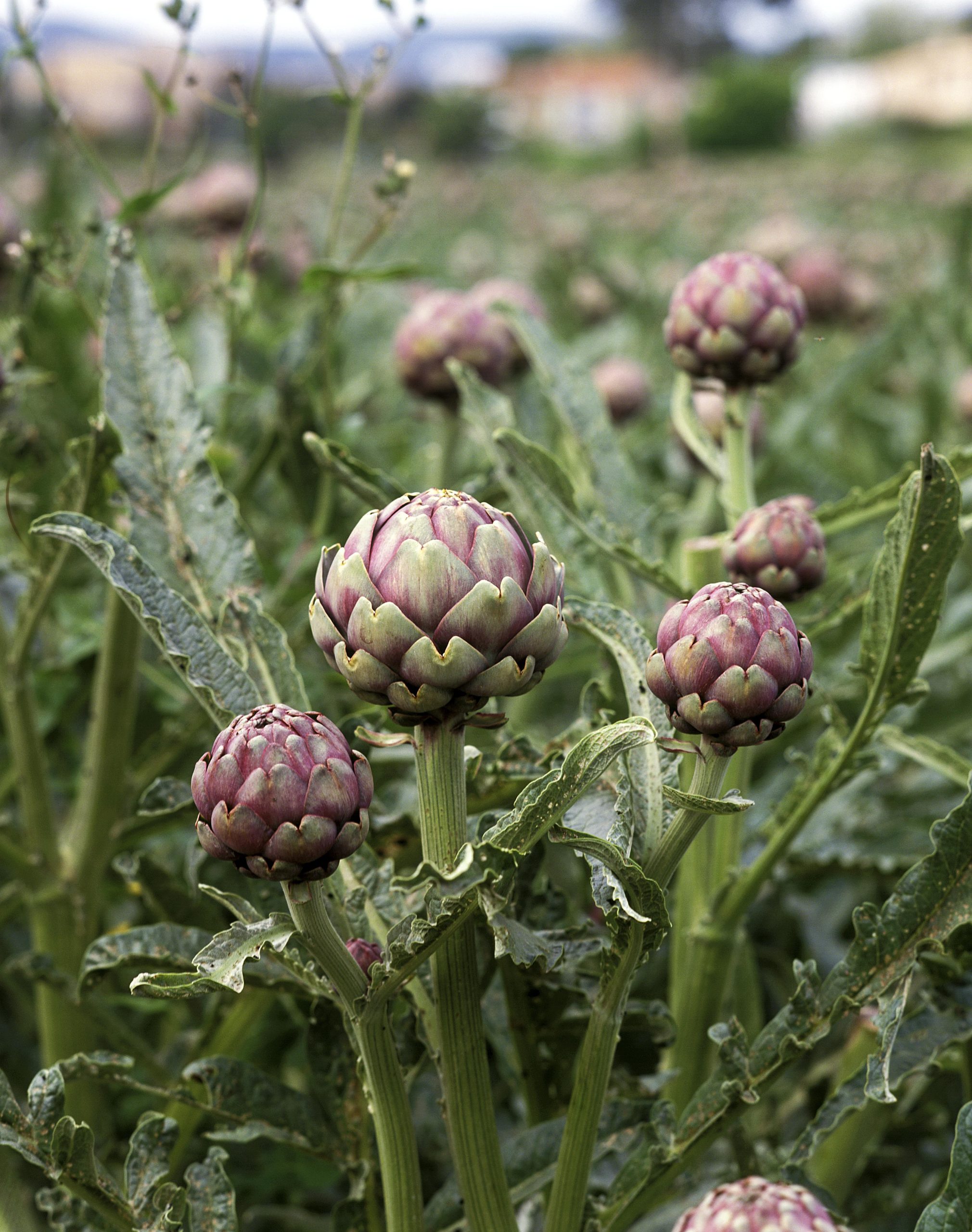

Surprisingly large, you can see them in the wild (under cultivation) near San Francisco, basking in rows in the steady temperatures and lovely, moist coastal fog.
And this is the artichoke we all know. If you’re American, it’s the one you love to dip into mayonnaise and scrape your teeth down.
See some really spectacular artichokes and cardoons and get horticultural tips here.
Or if you’re Italian, you might enjoy it multiple more sophisticated ways, like as a tiny baby, cut in half and braised in some delectable lemon vinaigrette or the like. If you’re Italian, you must have some epic patience because cleaning tiny artichokes is a labor of love.
And if you’re Italian you may also make dozens of tiny, filled ravioli at once and consider that no big deal, too. I have a pretty big tolerance for multi-day food projects and fussy plant needs, so again, my heritage comes into play.
Cardoon – Nope, Nothing Like Celery!
Now that we’ve established what an artichoke is, a cardoon can be best understood as a lot like an artichoke.
But you just eat the wide, white ribbed cardoon foliage only. To the casual observer, cardoon on the cutting board looks like celery — but in a black turtleneck, with a cigarette holder and black, pointy, patent leather shoes.
Gifted!
This year, I was so fortunate to receive two cardoon starts from Green Thumb Robin, who raised them from seed. It was so cool of her to give them to me — I had tried to start them for years and failed. Old seed?
Thank you Robin, oh ye of ultimate patience and undimmed horticultural hope.
A garden is made of hope. ~ W.S. Merwin
Robin is the meticulous one who nurtures a perfect, small cantaloupe every year from seed and enjoys it to the hilt with a dessert spoon.
As with all superb Italian food, good things come to those who wait, and cardoon requires some of that . . .
Speaking of Our Limited Growing Season

Cardoon requires a long growing season and here in the Selle Valley of Sandpoint, Idaho, where I consider us a Zone 4 or 5 (don’t believe them if they say zone 6), it takes a loooong time. This year, we were so lucky to escape frost until beyond mid-October.
The Finer Points of Blanching
About a month from when you want to harvest cardoon, it must be blanched.
Before you flat out refuse or run for the hills, let’s explore blanching a bit. Culinary blanching is the one that many home cooks will blanch at (sorry).
This is the patience game you might know from dipping tomatoes into boiling water with little Xes on their bottoms and then tossing them into the ice bath to quickly remove their skins. Personally, I love it! So satisfying! Others, not so much.
All blanching means in the vegetable growing context is that you need to get something to wrap around your cardoon for thirty days so the stalks become more tender and white.
In-ground garden blanching can be done with celery and leek, for instance. And Europeans deprive their asparagus of light for the same reason.
To blanch my cardoon plants, I used grocery sacks (because I was born in 1972 and they spring to mind when any home craft project presents itself).
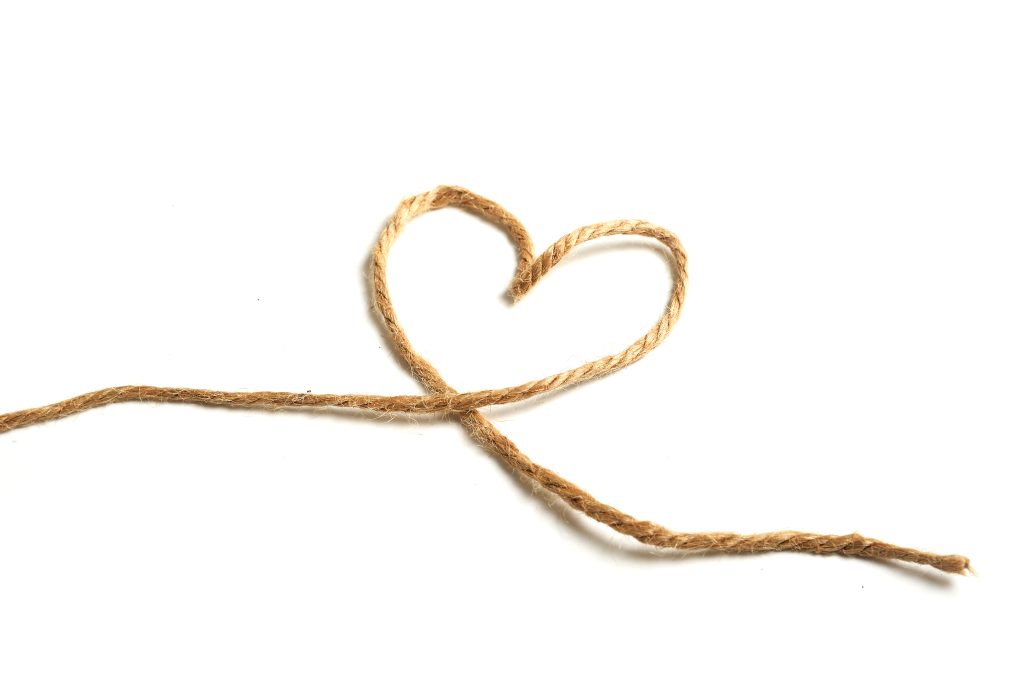
I just secured them with twine, which I buy in bulk and have a deep fondness for (other gardeners will be nodding their heads right about now).

From September 1 to mid-October, the stalks were wrapped in their bundles, getting fatter and whiter and juicier.
My cardoon grew peacefully by the zinnias without disturbance except for a visit from Farm Cat Miles.

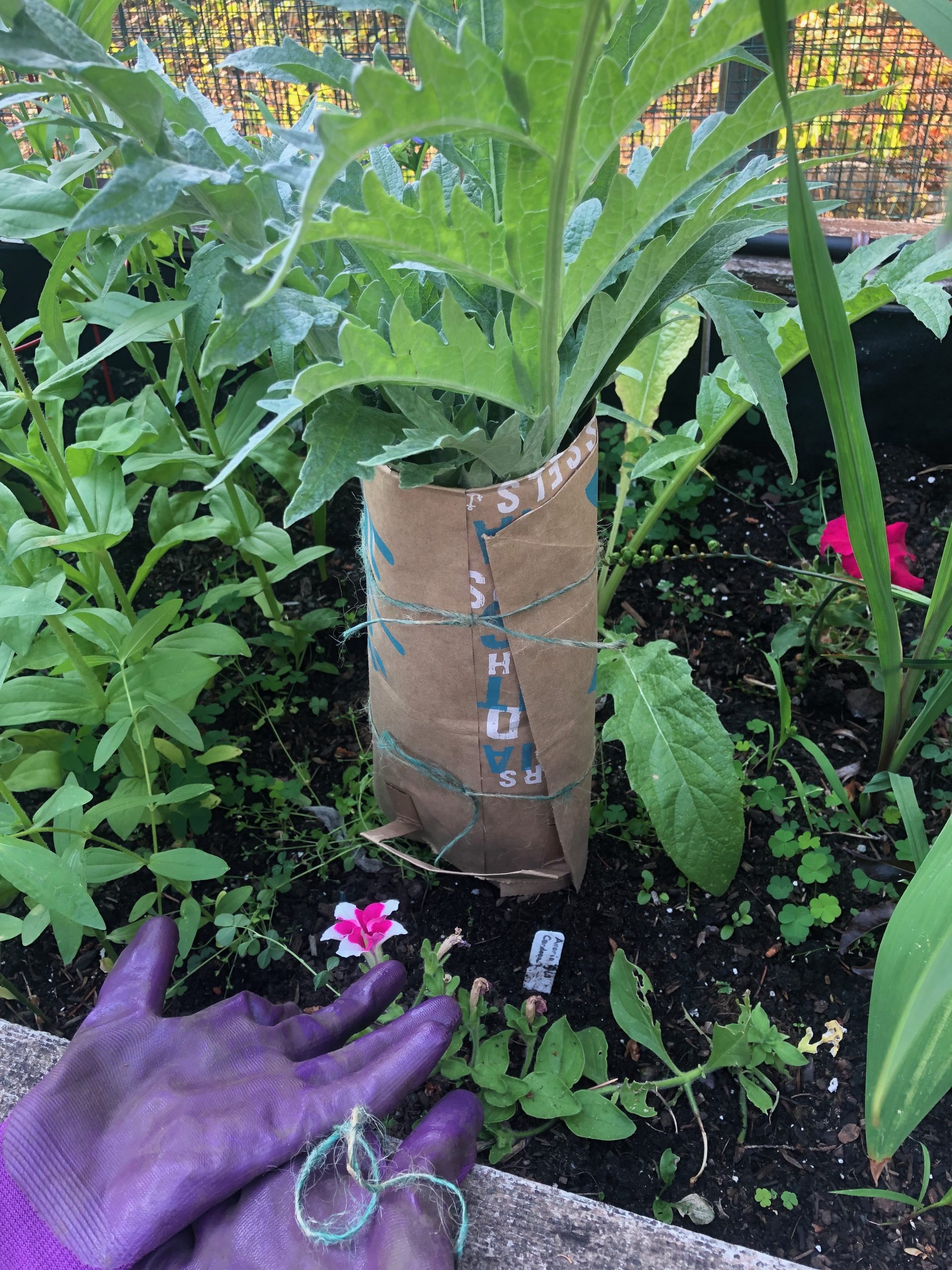
Then I and decided to go for it, harvested them in one swoop on October 18 and answered my ancestors’ call to make bagna cauda.
One More Blanching
But wait, you won’t escape that easily.
Please realize that after you are done with the horticultural blanching, after you wait and wait for your plants to mature, after you cut the spines from the stalks, you’ll also need to blanch the cardoon in the traditional way.
This page shows just how to prep and blanch cardoons to eat.
Please note: I cut mine about four inches long, intending to scoop up the delicious bagna cauda with them.


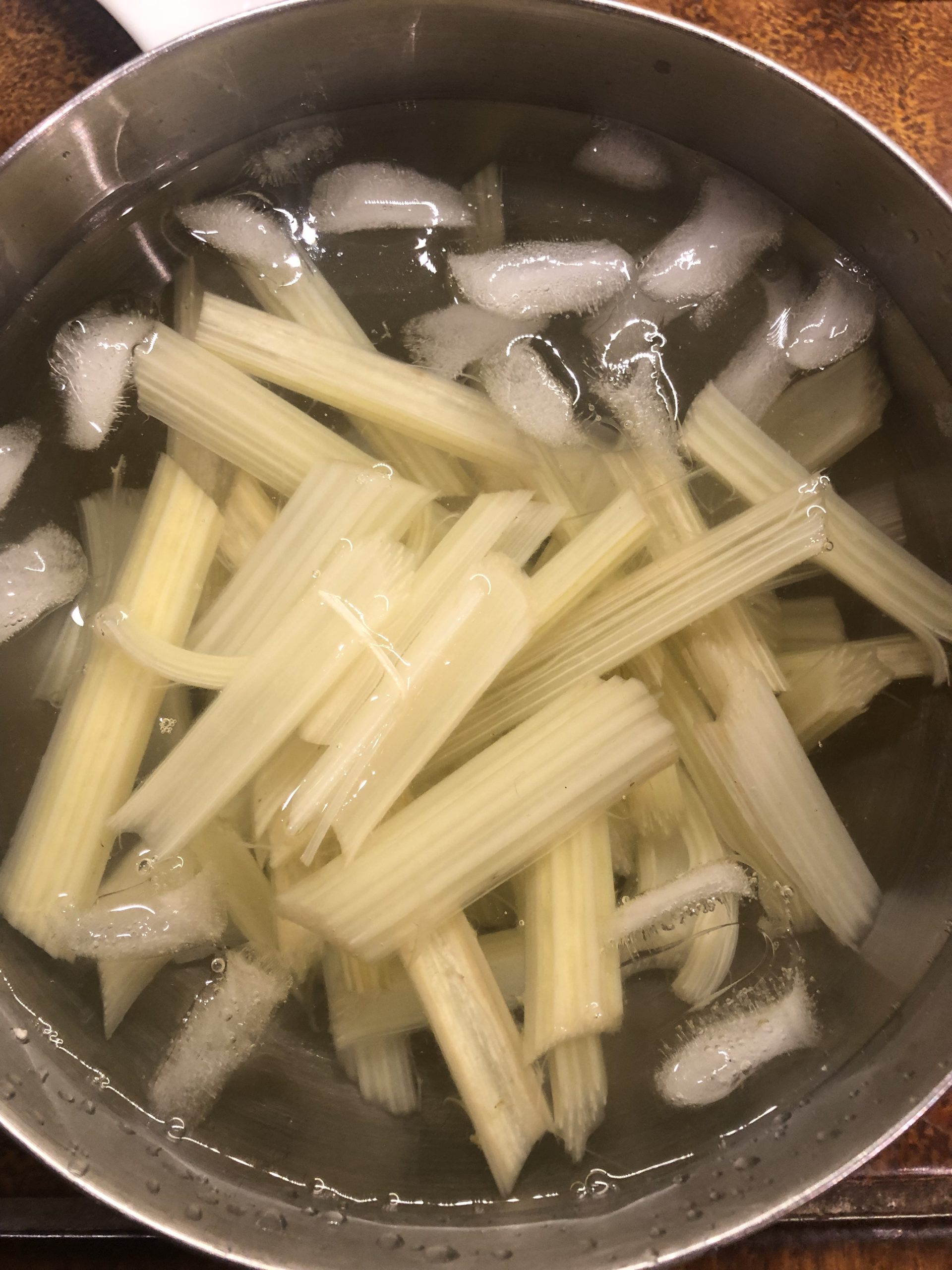
Northern Italy and My Family
Why am I willing to tie up vegetables in paper with string, wait a month then blanch them again after carefully removing their spines?
I come from a long line of horticulturalists. My Dad and Mom are mad for it, and I am cut from the same cloth.

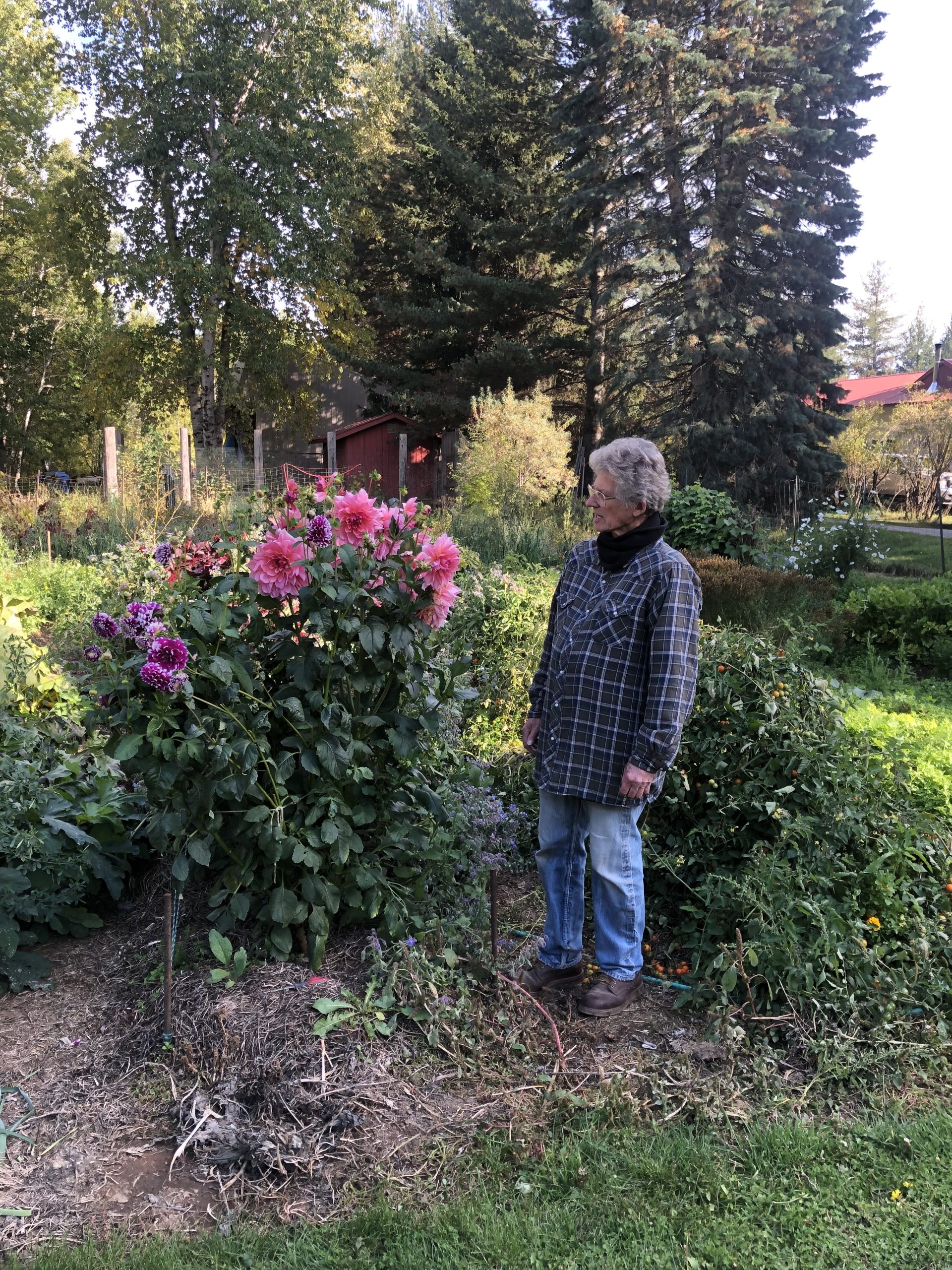
The relatives from Italy on my Dad’s side are from Asti, Italy, in the north of the county east of Turin in the plain of the Tanaro River.
These are the folks who grew cardoon and make bagna cauda before I was even a possibility. Vintners, these horticultural experts and food wizards immigrated to America and made a beautiful life for themselves and their families the very hard way, but those are stories for another day.
Once, my dad tells me, my great Grandfather Paride “Grandy” Bianco was once in-ground blanching a prized cardoon to serve (presumably with bagna cauda) at the next bocce match.
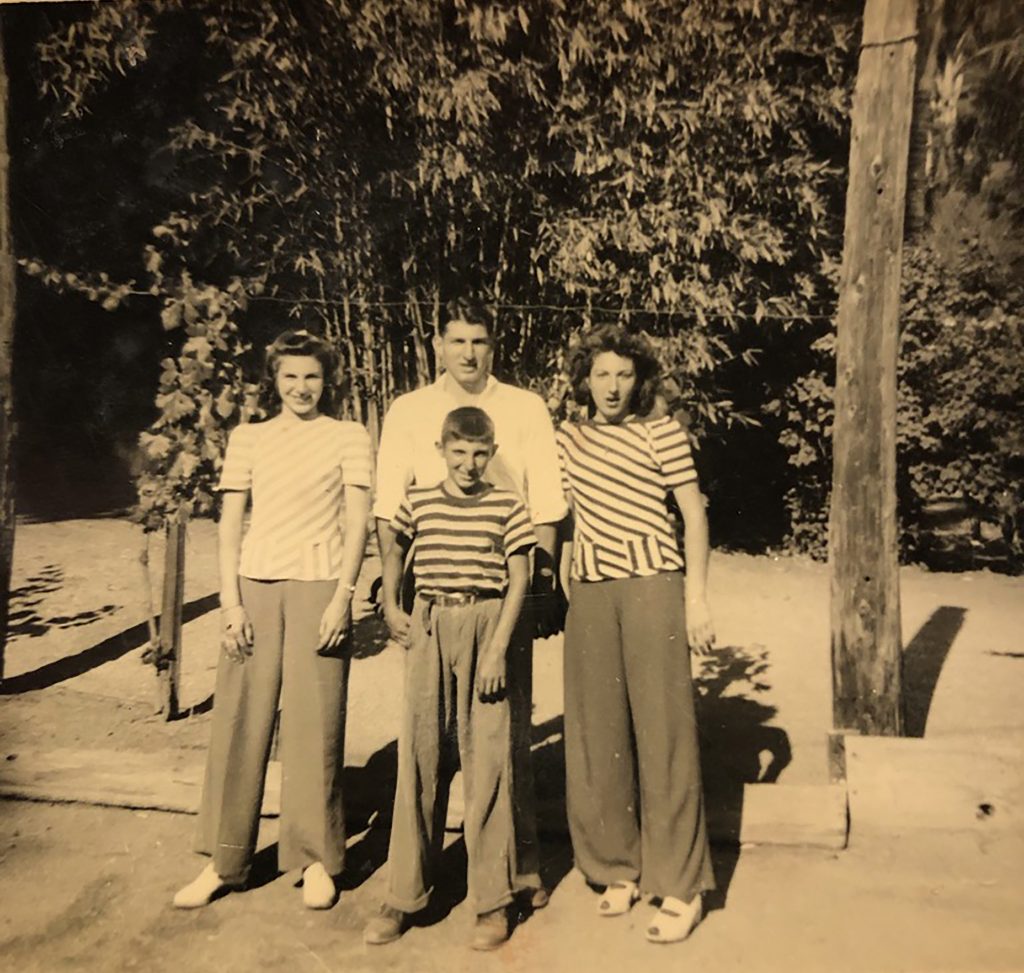
Paride and Matilde’s children in the 1940s in Guasti, California, from left to right: Yolanda, John (my paternal Grandfather), Rico (in front of John) and Penny.
Sadly, each and every one of them is now gone, but each also lived a very long and full life full of creativity and family. And part of why Double Decker exists is to continue the heritage I was lucky enough to get from these wine-growing farmers who came to America for a better life.
This was serious stuff the men on the Italian side of my family were heavily into. For instance, they purchased land to make a proper park for bocce. Not a casual hobby — come to think of it, we kinda go in for the intense stuff.
(Cue the dramatic and doomy operetta soundtrack now.)
Unfortunately, Paride’s new son-in-law Emilio Pascolati, took it upon himself to harvest said cardoon without permission.
Grandy was not pleased, to say the least. Family lore suggests Emilio was then unceremoniously chased with a shovel.
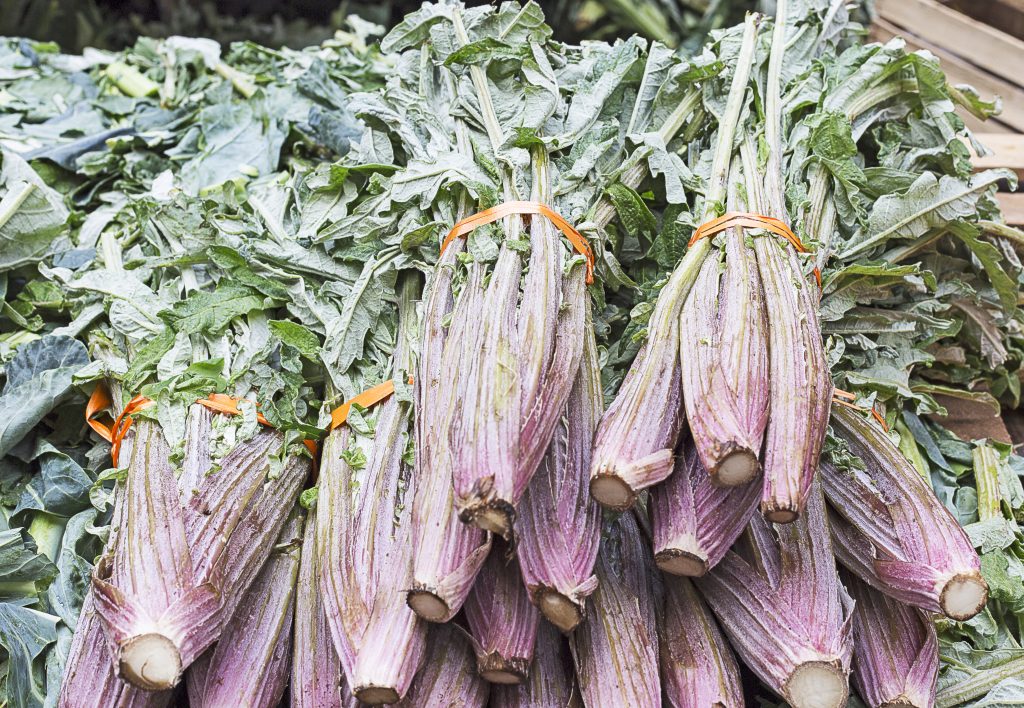
The moral of this story? Never cut another gardener’s cardoon! How can you know when their internal timetable will tell them it’s time to harvest?
The moment a cardoon is “ready” to be harvested after blanching is, of course, a very personal thing.
So, back to the start of this blog. It was supposed to be about cardoon. What is this weird not-celery exotic vegetable called cardoon good for anyway?
Well, the primary goal is bagna cada.
Bagna Cauda
Literally translated as “hot bath” from the Italian, this is a hot dip designed to be eaten with vegetables, primarily cardoon.
It is also a Northern Italian thing and a labor of love.
To serve it, you are supposed to use one of those little dishes with the flame beneath it so it stays piping hot.
DISCLAIMER: On Anchovies (Vegans, I apologize, please avert your eyes) Love ‘me or hate ‘em, I’m willing to bet you have a distinct opinion. If you’re a sea lion off the Isla Baletta in Peru, I know for sure you love them because I saw you gorging your two-thousand pound body on them with my own eyes from a rollicking boat. But if you are the average American, you are likely to sing the “too salty” refrain. I love anchovies in a sort of innate way and can’t be swayed. And I wish there was a substitute for this recipe, but there is not.
Full Circle Satisfaction
And if you’re wondering, I absolutely loved bagna cada with cardoon and thought it was 100 percent worth it.
Of course, I was the only taker in my house, but Jared has Irish heritage and can’t be blamed.
I say we should normalize eating an entire bulb of garlic at one meal. No big deal—we have enough garlic on hand to be lavish.
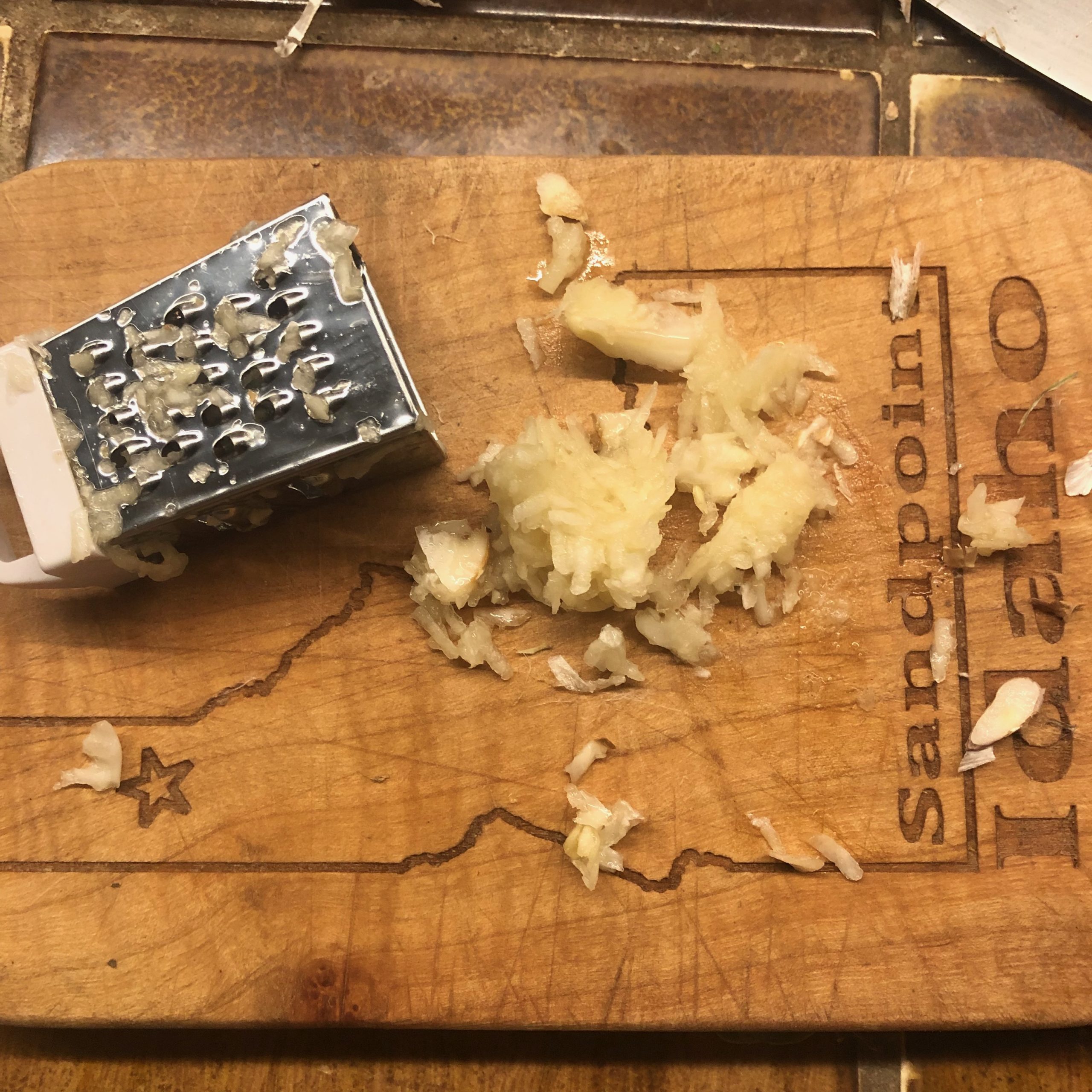

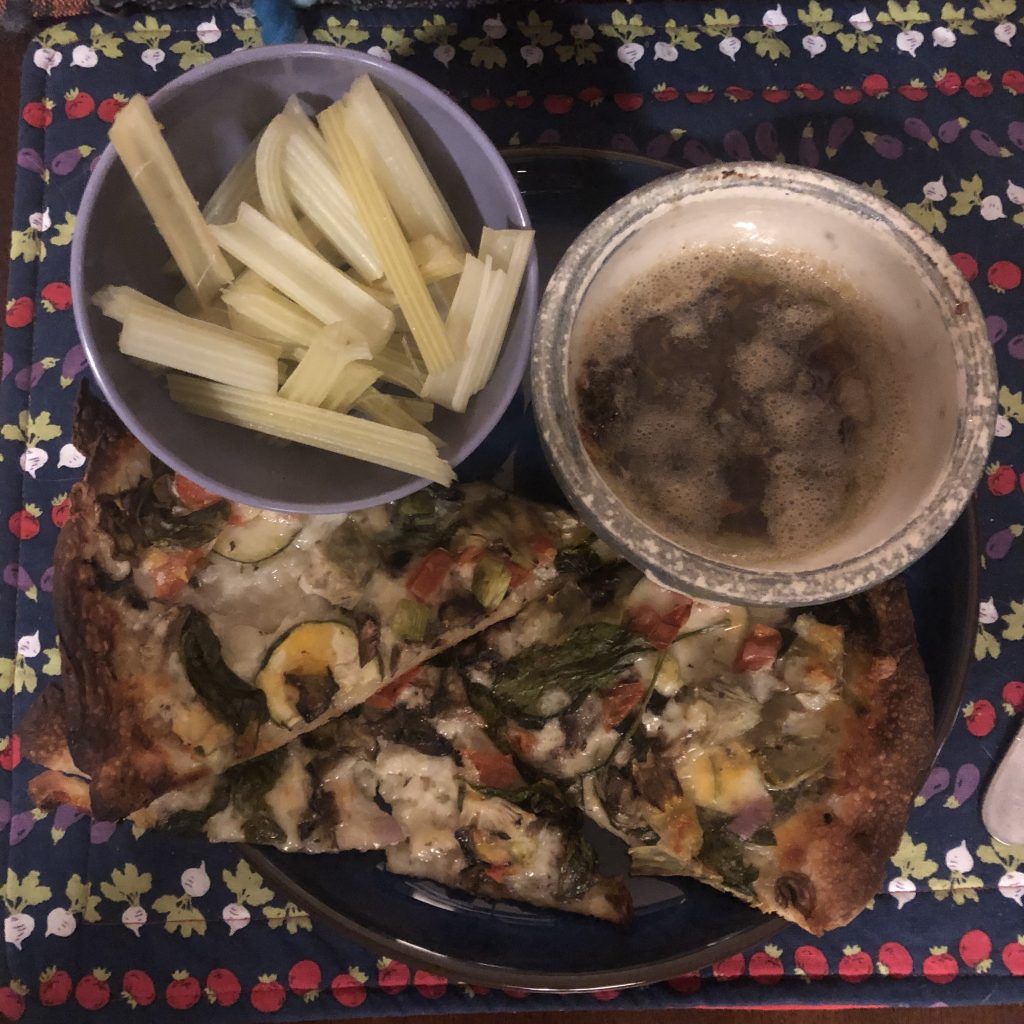
Get yourself a mini garlic grater and see how easy breaking down garlic can be.
One caveat: I did halve the recipe, since it was my first go and I was in testing mode.
Spoiler alert! I lapped bagna cada up like a kitten goes for cream.
After bagna cada, I understood on a molecular level that I do indeed have Northern Italian genetics.
I don’t think my cardoon was ideal, especially after seeing how big it can get and realizing mine was small. But the tenderest interior portions of my cardoon were excellent!
After I dipped up the bagna cada with the cardoon, I ended up dipping pizza in it, too and realized immediately bagna cada is ideal for serving with sourdough toast strips.
Next time!
For years, I had heard about the power of bagna cauda and I finally got there myself!
I slept like a baby and had dreams of dancing garlic bulbs, feeling 100% grateful for my heritage and knowing that it informs my need to grow food.
Mangia, mangia e sii felice!
Learn more:
Great culinary video featuring an old timer explaining about bagna cauda and also my people’s tendency to cover everything in a thin layer of safety plastic.

Which incidentally flashed me back to Matilde’s sitting room where my cousin Nino and I (left) played hot lava and jumped from red damask and raised velvet couch to the other as children.
(I recall that much of the furniture and for sure the lampshades were covered in plastic.)
Pasta Grannies’ Luisa makes bagna cauda: the real deal!

